
A cemetery, burial ground, gravesite, graveyard, or a green space called a memorial park, is a place where the remains of dead people are buried or otherwise interred. The word cemetery implies that the land is specifically designated as a burial ground and originally applied to the Roman catacombs. The term graveyard is often used interchangeably with cemetery, but a graveyard primarily refers to a burial ground within a churchyard.
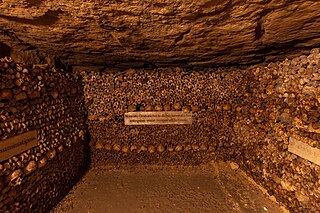
The Catacombs of Paris are underground ossuaries in Paris, France, which hold the remains of more than six million people. Built to consolidate Paris's ancient stone quarries, they extend south from the Barrière d'Enfer former city gate; the ossuary was created as part of the effort to eliminate the effects of the city's overflowing cemeteries. Preparation work began shortly after a 1774 series of basement wall collapses around the Holy Innocents' Cemetery added a sense of urgency to the cemetery-eliminating measure, and from 1788, nightly processions of covered wagons transferred remains from most of Paris's cemeteries to a mine shaft opened near the Rue de la Tombe-Issoire .
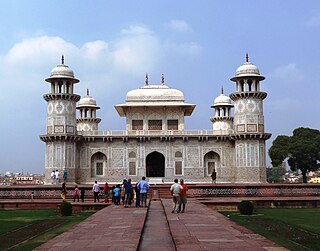
A tomb or sepulcher is a repository for the remains of the dead. It is generally any structurally enclosed interment space or burial chamber, of varying sizes. Placing a corpse into a tomb can be called immurement, although this word mainly means entombing people alive, and is a method of final disposition, as an alternative to cremation or burial.

West Norwood Cemetery is a 40-acre (16 ha) rural cemetery in West Norwood in London, England. It was also known as the South Metropolitan Cemetery. One of the first private landscaped cemeteries in London, it is one of the "Magnificent Seven" cemeteries of London, and is a site of major historical, architectural and ecological interest.

Henry Rutgers was a United States Revolutionary War hero and philanthropist from New York City. Rutgers University was named after him, and he donated a bond which placed the college on sound financial footing. He also gave a bell that is still in use.

Nunhead Cemetery is one of the Magnificent Seven cemeteries in London, England. It is perhaps the least famous and celebrated of them. The cemetery is located in Nunhead in the London Borough of Southwark and was originally known as All Saints' Cemetery. Nunhead Cemetery was consecrated in 1840 and opened by the London Cemetery Company. It is a Local Nature Reserve.

Flower Hill Cemetery is located in North Bergen, New Jersey. It is cojoined with Hoboken Cemetery and Machpelah Cemetery.
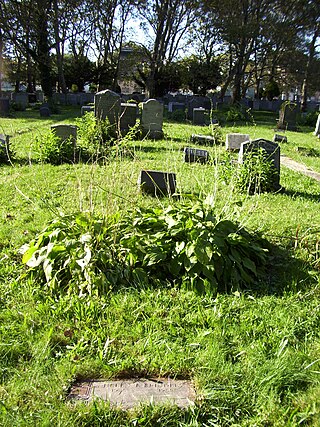
Bayview Cemetery, previously called Greenville Cemetery, is located in Jersey City, New Jersey. It merged with New York Bay Cemetery and is now known as Bayview – New York Bay Cemetery.

Richmond National Cemetery is a United States National Cemetery three miles (4.8 km) east of Richmond in Henrico County, Virginia. Administered by the United States Department of Veterans Affairs, it encompasses 9.7 acres (3.9 ha), and as of 2021 had more than 11,000 interments. It is closed to new interments. Richmond National Cemetery was listed on the National Register of Historic Places in 1995.

Bergen Square, at the intersection of Bergen Avenue and Academy Street in Jersey City, is in the southwestern part of the much larger Journal Square district. A commercial residential area, it contains an eclectic array of architectural styles including 19th-century row houses, Art Deco retail and office buildings, and is the site of the longest continually-used school site in the United States. Nearby are the Van Wagenen House and Old Bergen Church, two structures from the colonial period. St. George & St. Shenouda Coptic Orthodox Church founded by early Egyptian immigrants was one of the original Coptic congregations in New Jersey.
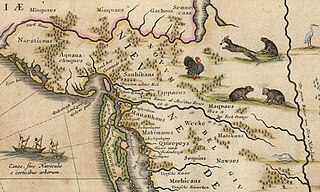
Bergen was a part of the 17th century province of New Netherland, in the area in northeastern New Jersey along the Hudson and Hackensack Rivers that would become contemporary Hudson and Bergen Counties. Though it only officially existed as an independent municipality from 1661, with the founding of a village at Bergen Square, Bergen began as a factory at Communipaw circa 1615 and was first settled in 1630 as Pavonia. These early settlements were along the banks of the North River across from New Amsterdam, under whose jurisdiction they fell.

The Old Bergen Church is a historic church congregation in Jersey City, Hudson County, New Jersey, United States. Established in 1660 in what was then the Dutch colony of New Netherland, it is the oldest continuous religious congregation in what is today the State of New Jersey. The congregation is jointly affiliated with the Reformed Church in America and the Presbyterian Church (USA). The church was added to the National Register of Historic Places on August 14, 1973. The original church building was constructed in 1680 and the current edifice was built in 1841.

The City of London Cemetery and Crematorium is a cemetery and crematorium in the east of London. It is owned and operated by the City of London Corporation. It is designated Grade I on the Historic England National Register of Historic Parks and Gardens.
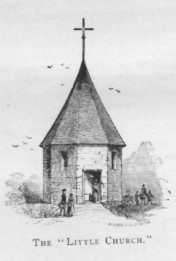
Voorleser was the title given to a highly responsible citizen in New Netherland and later Dutch colonies, who had semi-official duties in local law, education and religion.
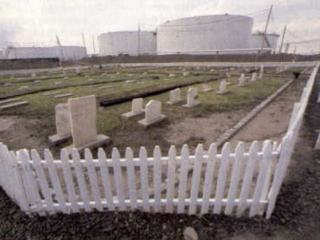
Constable Hook Cemetery is the name used to refer to two cemeteries on Constable Hook in Bayonne, New Jersey, the extant Bayonne Constable Hook Cemetery and the no longer existing Van Buskerck Family Burial Ground. Both were founded by members of the van Buskirk family, descendants of the cape's first settler, Pieter Van Buskirk. In 1906 the Standard Oil Company purchased the family land to expand their refinery, already the largest in the world at the time. Myths and historical inaccuracies have led to confusion about the two burial grounds.

The Newkirk House, also known as the Summit House, located at 510 Summit Avenue is the oldest surviving structure in Jersey City, New Jersey. The two-story Dutch Colonial building, composed of sandstone, brick, and clapboard dates to 1690.

Biggleswade Cemetery was the main burial ground for the town of Biggleswade in Bedfordshire. Opening in 1869, the cemetery is located on Drove Road and since 1986 has been closed for burials except for interment in family plots.

The Old Newton Burial Ground is a historic cemetery located in Newton, Sussex County, New Jersey. The cemetery was the primary burial ground in the town for a century after its establishment in 1762. As the burial ground would reach capacity, the state legislature incorporated the Newton Cemetery Company which began operating a new cemetery in 1867. After this time, interments would continue at the old burial ground intermittently until 1943. The burial ground contains the graves of members of local families from Newton and the surrounding areas, and includes several local and state political figures, prominent citizens, and veterans. While nineteenth-century sources attest 5,000 burials within the cemetery, a recent transcription lists only 1,287 individual known graves.

The Peter Stuyvesant Monument is a memorial to Peter Stuyvesant and the establishment of settlement of Bergen, New Netherlands in 1660. It is located at Journal Square district of Jersey City, New Jersey. The statue of Stuyvesant by J. Massey Rhind was originally installed in 1913 at Bergen Square. The statue and pedestal were unceremoniously removed in 2010. In 2014, the statue was restored and placed at nearby park in anticipation that a new pedestal would be built at the original location.





















